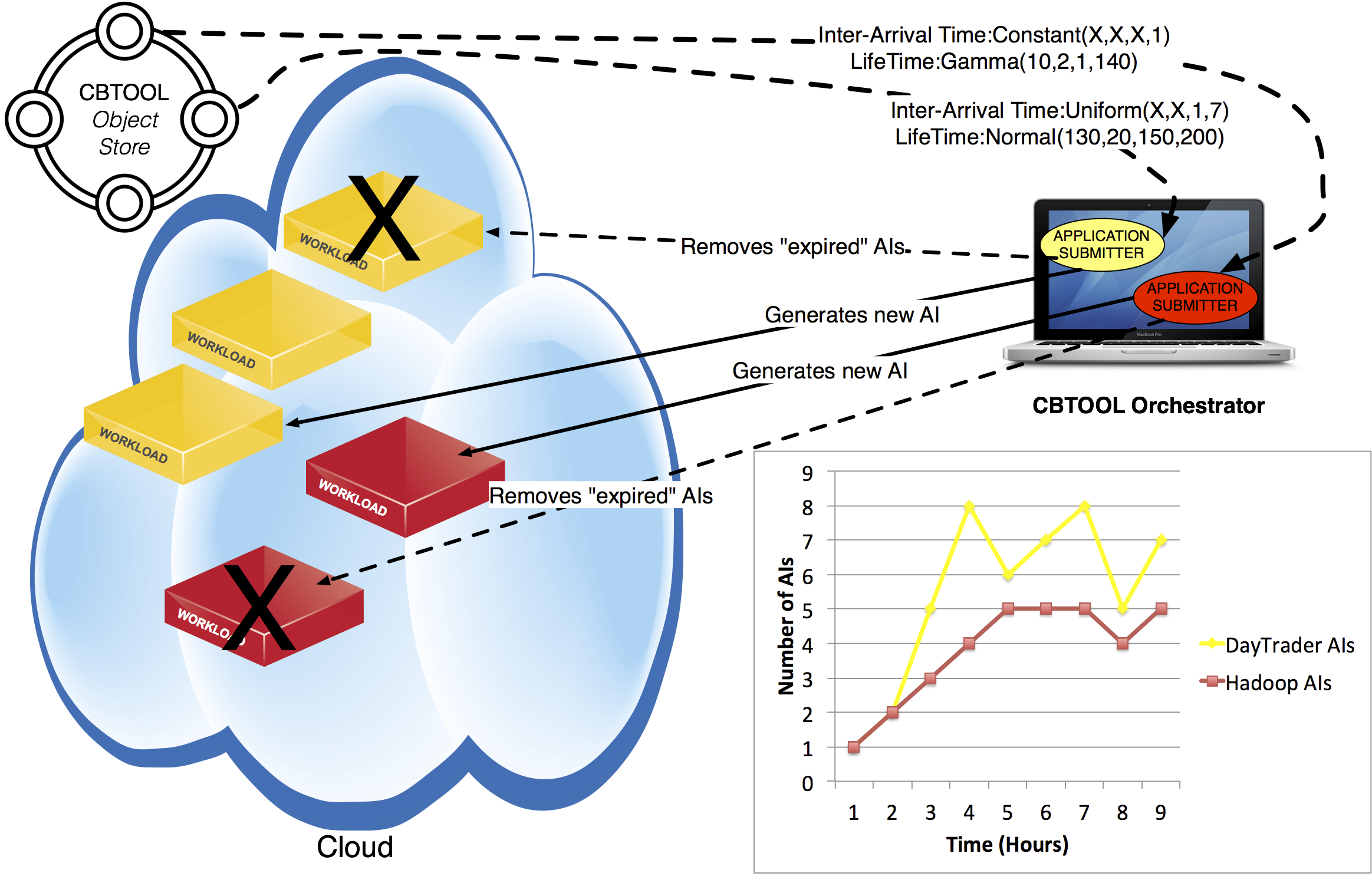DOC: Virtual Application Submitter - ibmcb/cbtool GitHub Wiki
-
Virtual Application Submitter (VAS or VAppS) deployments are carried out by "Virtual Application Submitter Daemons", spawned by the CBTOOL API server. More details can be found here.
-
CBTOOL decides which VApps to create, based on a Virtual Application Submitter template ( Configuration Object [AIDRS_TEMPLATES]), and spawns a new "Virtual Application Daemon" to each new VApp. The list of template attributes can be inspected with the command
patternshow (vas pattern). -
Virtual Application Submitter templates are defined by supplying at least six key attributes on a “template” file (more optional attributes can be added).
-
A Virtual Application
type. The list of Virtual Application types can be inspected with the commandtypeshow (vapp type). -
Maximum number of individual Virtual Application instances that can be instantiated by a single instance of a Virtual Application Submitter (
max_ais). -
The time between the deployment of two Virtual Application instances (
iait). -
The time that deployed Virtual Application instance is allowed to run before being automatically removed by the Virtual Application Submitter (
lifetime). -
A random distribution for the Load Level. Possible distributions (in addition to fixed values, evidently) are: "exponential" (e.g., exponentialI50IXI10I1000), "uniform" (e.g., uniformIXIXI100I200), "gamma" (e.g.,gammaI50I20I10I1000) and "normal" (e.g., normalI50I20I10I1000).
-
A random distribution for the Load Duration. Same as above.
- The Load Level and Load Duration parameter specify a per-individual Virtual Application load behavior that overrides what was defined on the VApp’s template. With that, it is possible to reuse the same VApp definition to implement experiments that emulate vastly different behaviors for the same VApp type. For instance, the same type could be used to define two different Submitters, one “slow but heavy” (i.e., the inter-arrival time is large, but the average load level for each VApp is high), or another that is “fast but light” (i.e., small inter-arrival time, low average load level). Figure 5 depicts an experiment where one Submitter deploys DayTrader VApps, while another deploys Hadoop VApps.
